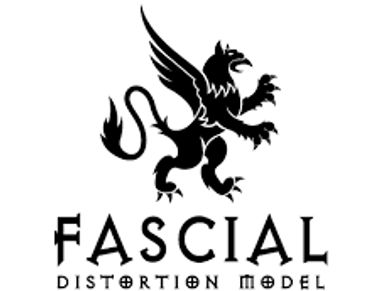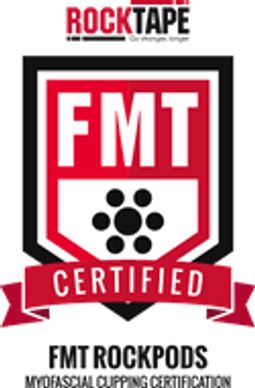Manual Therapy Specialist

Mastering multiple tools and multiple approaches allows me to address more conditions for more types of people
Doctor Plutchok’s start into manual therapy was initially combining full body chiropractic with Active Release Technique. He was certified in Active Release Technique for an entire decade (2006-2017), and it became a springboard to learn other soft tissue modalities. He took a certification course in Anatomy Trains, which provided a unique study of the anatomy and the systems/chains. Fascial Distortion Model became his next primary addition, which is an up and coming modality used in many professional sports teams. Over the years he has also stacked many tools, such as myofascial cupping,, compression bands, kinesiotape, rockblades/IASTM. As technology has advanced, he also employs percussion tools like the ArthroStim, and vibration tools like Rapid Release Technology and Hypervolt. To enhance his approach with taping, cupping, compression therapy, and IASTM, he received his certification with FAKTR.
Manual Therapy Techniques









Transform Your Life with DoctorToddP Physiotherapy
Sports Chiropractic
Fascial Distortion Model

Dr. Plutchok provides advanced full biomechanical correction utilizing state of the art techniques. Never in the history of chiropractic have we been able to provide the level of help and expertise that now exists. These newer correction methods are even safer, more comfortable and more effective than ever before. Dr. Plutchok has had years of training and experience in spinal adjustment with a focus on upper and lower extremities. We combine multiple techniques utilizing our hands as well as include the use of technology like the Arthrostim; an instrument that is used as a less forceful alternative to manual adjustments
Fascial Distortion Model
Fascial Distortion Model

Fascial Distortion Model (FDM) is an anatomical perspective, originated by US physician Stephen Typaldos, D.O., in which “the underlying etiology of virtually every musculoskeletal injury (and many neurological and medical conditions) is considered to be comprised of one or more of six specific pathological alterations of the body’s connective tissues (fascial bands, ligaments, tendons, retinacula, etc.). As a model, the FDM is an abbreviated interpretation of the pathology of fascial injuries and contemplates the structural consequences of orthopedic, medical, surgical, and manipulative interventions.”
Some common injuries that are easily resolved with FDM manual treatments include: pulled muscles and muscle tears, sprained ankles, shin splints, Osgood-Schlatter Disease, whiplash, headaches, shoulder pain, frozen joints, kidney stones, plantar fasciitis, sprains, strains and tendonitis, and low back pain
Anatomy Trains

Anatomy Trains maps the ‘anatomy of connection’ – the whole-body fascial and myofascial linkages. Anatomy Trains link the individual muscles into functional complexes, each with a specific anatomy and ‘meaning’. Anatomy Trains leads to new holistic strategies for health professionals, movement teachers, and athletes to resolve complex postural and movement patterns
Myofascial Decompression-Cupping Therapy

Myofascial Cupping has been around since the early 19th century – only recently has the image of purple circles on professional athlete’s backs created attention to an ancient myofascial therapy. The cups and techniques have changed over time, but the basic premise of the cups providing suction to decompress the underlying tissue remains the same. The cupping enables skin/fascial/nerve gliding to help reduce tissue swelling, improve movement and modulate pain.
Compression Band Therapy

Compressional Band Therapy (aka Tack and Floss, Voodoo Floss, Blood Flow Restriction, etc) is a manual technique that has been shown to improve range of motion, fluid dynamics, pain mitigation, and improved recovery rates. We aim to create positive change within the tissues and joints through compression, tension, and movement.
By taking advantage of the restrictive properties of the band during passive or active ranges of motion under light load, flossing can contribute to fascial glide, excursion of swelling and dynamic joint centration—all critical components to success for the client both in and out of the clinic.
By using compression, we can force edema into the lymphatic system for drainage and influence the positioning of the joint; both of these effects have a direct impact on movement and ranges of motion
IASTM Certified (Instrument Assisted Soft Tissue Management)

Instrument Assisted Soft Tissue Mobilization or IASTM, is a technique performed with ergonomically designed instruments designed by Rockblade that help treat fascial restrictions, encourage rapid localization and effectively treat areas exhibiting soft tissue fibrosis, chronic inflammation, or degeneration.
The ergonomic design of these instruments provides the clinician with the ability to locate restrictions and treat the affected area with the appropriate amount of micro-trauma inducing pressure.
The introduction of controlled micro-trauma to affected soft tissue structure causes the stimulation of a local inflammatory response, and initiates reabsorption of inappropriate fibrosis or excessive scar tissue, resulting in a remodeling of affected soft tissue structures.
Adhesions within the soft tissue which may have developed as a result of surgery, immobilization, repeated strain or other mechanisms, are broken down, allowing full functional restoration to occur..
Combining cutting edge soft tissue techniques to fit your ne
Kinesiotaping Certification-Rocktape & Dynamic Tape

RockTape is a revolutionary new type of therapeutic kinesiology taping product designed to aid in the treatment and healing of various sports injuries, as well as improve physical performance. It can be used to compress or decompress an area, depending on it’s application. It can be used to promote blood flow, or it can be used to help drain swelling. It can be used to decrease pain, but can also be used to increase your awareness of a specific area that needs attention. Depending on its application, it can also be used to activate or deactivate a muscle group to enhance performance or decrease the risk of injury.
FAKTR Certification

FAKTR treatment is actually a number of treatments and modalities. Some of the most common FAKTR protocols include:
- Both manual and instrument-assisted soft tissue mobilization techniques (IASTM)
- Joint and/or muscle flossing
- Myofascial release
- Taping and/or cupping
- Functional movements, training, and therapeutic exercises
Instrument-assisted soft tissue mobilization (IASTM) is very common with FAKTR treatment plans. Essentially, your chiropractor will use small metal or plastic instruments to massage and free up restricted tissues in your problem area(s). This works to break down scar tissue & promote blood flow, which works to improve your movement, reduce pain & stiffness, and speed up healing.
This type of soft tissue manipulation helps to aid in proper recovery of all parts of the area, including the alignment of fibers & connective tissues.
Not only does this help patients during the healing process, but it can also lead to better overall healing, leaving the problem area strong once recovery is done.
Taping with kinesiology tape helps to stabilize and support your muscles without interfering with your natural muscle movements or healing process.
Vibration & Percussion Therapy
Vibration & Percussion Therapy

Dr. Plutchok utilizes a blend of technology in the forms of percussion and vibration equipment. The three main choices he uses are the Arthrostim, Hypervolt, and Rapid Release Technology.
An Arthrostim ® adjustment involves the use of a special instrument that produces a speedy thrust and recoil motion, similar to the way a chiropractor uses their hands to adjust the vertebrae in your back. The benefit of the instrument is that it performs this high-velocity, low-amplitude motion 12 times per second, and is targeted to a very small area. The force of the thrust radiates through the joint and the tissues that surround it, releasing trigger points that are often the cause of muscle spasms.
The Rapid Release Technology device is able to use certain vibration frequencies to target problem areas. It has five treatment heads to offer a range of different treatments for different injuries. The Rapid Release Technology device is designed and made to bring out the Tonic Vibration Reflex (TVR) which is a neurological reaction that relaxes muscles and helps to lower the stress levels of the body. This device is used in circular small movement, over a towel, on the muscles, not the bone, and it may feel tingly’ at first but it will have a lasting effect with about five minutes of treatment.
This website uses cookies.
We use cookies to analyze website traffic and optimize your website experience. By accepting our use of cookies, your data will be aggregated with all other user data.